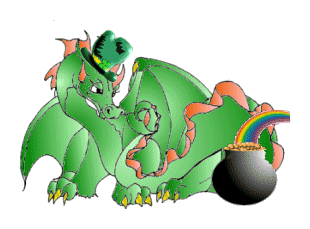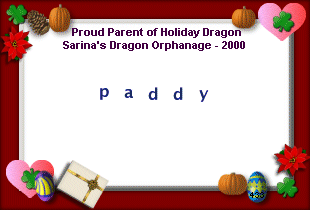
WHO WAS ST. PATRICK?
Around the year 400, Patrick was born in Scotland. When he was yet a boy, the Ard-Ri,
that is, High King of Ireland, Niall of the Nine Hostages by name, swept across the sea
and captured his village. Patrick was taken to Ireland, sold as a slave, and sent to herd
sheep and swine. There in northeast Ireland, in his solitude and suffering, Patrick
discovered the one true God, and, to this Creator God he pledged his life.
Years later, Patrick dreamed a vision, and following that vision, he escaped and
struggled home to his family. After years of religious study to become a priest and
missionary, Patrick dreamed of returning to Ireland; often hearing in his dreams the
voice of the Irish, "crying to thee, come hither and walk with us once more". Eventually
Pope Celestine fulfilled his wish and commissioned him as bishop to preach the gospel
to the Celtic people. Patrick came as the rising sun to the eastern shore of Ireland, and
commenced an incredible mission across Ireland of preaching and baptizing, ordaining
priests and bishops, erecting churches and establishing places of learning and worship,
though such feats in primitive times were not without difficulty and danger.
Patrick was sent to preach the gospel to heathens, found that the pagan Irish had great
difficulty comprehending the doctrine of the Trinity, until he gave them a natural
example by holding up a shamrock to show the three leaves combined to make a single
plant. The Irish understood at once, and the shamrock became the symbol of the land.
Irishmen wear it in their hats on the saint's day.
March 17, 493 AD, was the death of Saint Patrick, and his universal recognition as the
patron saint of Ireland, that led to the celebration of March 17 as Saint Patrick's Day.
Its emphasis in Ireland is a holy religious time with appropriate praying, singing and dancing.







Adopted ^ Leprachaun




Irish Legend says if you 'KISS' the Blarney Stone you will be given the gift of 'eloquence and persuasiveness" also known as the "GIFT OF THE GAB." Take your mouse and click on our version of the Blarney Stone and pucker up!


Click on shamrock button to take a tour of the Blarney castle




Click on one of the shamrocks to visit more irish sites.


Like to have some fun and win your own award like this one?
Just click on it and go there for
details.

